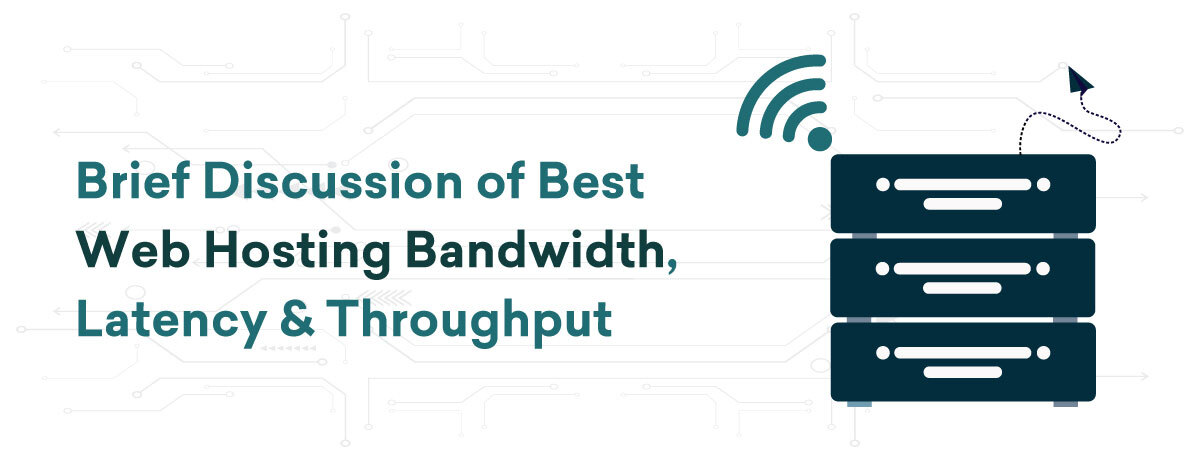When selecting the best web hosting service, it’s crucial to understand three key technical terms: bandwidth, latency, and throughput. These terms are often used interchangeably, but they represent different aspects of web hosting performance. A deep understanding of these parameters can help you choose a hosting provider that ensures optimal website performance, leading to better user experiences and higher search engine rankings. This article provides a brief discussion of bandwidth, latency, and throughput, explaining their significance and how they impact web hosting.
Bandwidth:
Bandwidth refers to the maximum amount of data that can be transferred between your website and its users over a specific period, usually measured in gigabytes (GB) per month. Think of bandwidth as the capacity of a highway: the wider the highway, the more cars (data) can travel on it simultaneously without causing traffic jams.
- Importance of Bandwidth in Web Hosting
Adequate bandwidth is essential for handling large volumes of traffic and ensuring fast data transfer rates. Websites with high-quality media content, such as videos and high-resolution images, require more bandwidth. Insufficient bandwidth can lead to slow loading times, poor user experiences, and potential downtime when traffic spikes occur. - Choosing the Right Bandwidth
When choosing a web hosting provider, consider your website’s content and expected traffic. For example, e-commerce sites, media-heavy blogs, and streaming services should opt for higher bandwidth to accommodate their needs. Most hosting providers offer scalable plans, allowing you to upgrade your bandwidth as your website grows.
Latency:
Latency is the time it takes for a data packet to travel from the user’s browser to the web server and back. It’s measured in milliseconds (ms). Lower latency means faster response times, which is crucial for delivering a smooth user experience.
- Impact of Latency on Website Performance
High latency can result in noticeable delays in loading web pages, leading to frustration and increased bounce rates. This is especially critical for websites that rely on real-time interactions, such as online gaming, live streaming, and financial trading platforms. - Factors Affecting Latency
Latency is influenced by several factors, including the physical distance between the server and the user, the quality of the hosting provider’s network infrastructure, and the efficiency of data routing. Choosing a hosting provider with data centers located close to your primary user base can significantly reduce latency.
Throughput:
Throughput is the actual amount of data successfully transferred from the server to the user over a given period, typically measured in megabits per second (Mbps). While bandwidth represents potential capacity, throughput is a measure of actual performance.
Throughput and Its Relevance to Web Hosting
High throughput ensures that large amounts of data can be delivered quickly and efficiently, which is crucial for maintaining high-performance levels, especially during peak traffic times. Websites with dynamic content, high user engagement, and large file transfers benefit from high throughput.
Maximizing Throughput
To maximize throughput, choose a hosting provider that offers robust infrastructure, including high-speed SSD storage, powerful processors, and optimized network configurations. Load balancing and content delivery networks (CDNs) can also enhance throughput by distributing traffic and reducing server load.
Conclusion
It is crucial to understand the differences and connections among bandwidth, latency, and throughput when choosing the best web hosting provider. The ability of your website to handle traffic is determined by its bandwidth, the pace at which data travels is affected by latency, and the actual performance of data transfer is measured by throughput. You can select a hosting company that guarantees quick, dependable, and effective service by considering these factors about the particular requirements of your website. As a result, your online presence grows and performs while also improving user experience and search engine rankings.








